Breakfast at our Florence hotel lived up to our expectations, including the presence of a barista making proper espresso based drinks instead of having to get them from a machine for those of us who wanted something other than brewed coffee.

In honour of my Italian daughter-in-law, today I started my day with cookies dipped in cappuccino.
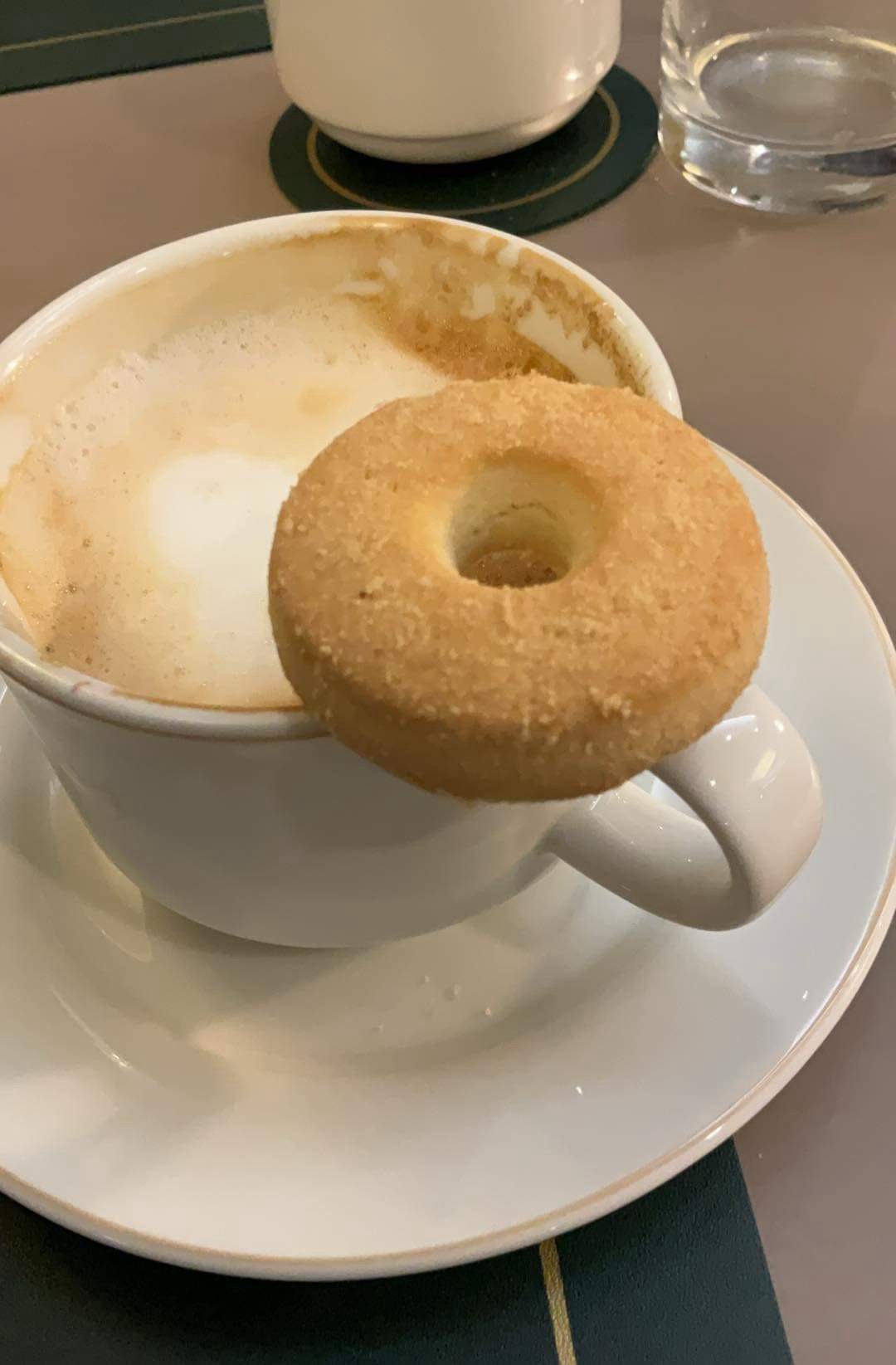

All of what we saw on today’s tour we had already seen on our much more thorough Viking tour in 2022, Episode 250, but nonetheless every tour guide has a different area of interest, so we always learn something new even in familiar places. This time it was the information that the magnificent Florence Duomo (cathedral) was built entirely using Florentine tax money and donations from the wealthy citizenry, with no contribution at all from the Vatican or the Roman Catholic Church. That’s because the Duomo, like many church buildings of its time, was less a house of religion/worship than a symbol of the city-state’s wealth. Hence there was huge competition between Florence, Pisa, and Sienna to have the biggest cathedral. Florence “won”, and the citizens of Pisa have been talking smack about them ever since.
In fact, the Duomo is so huge, and so closely surrounded by other buildings, that it is impossible to photograph it in its entirety. The best you can do is focus on sections and specific details.
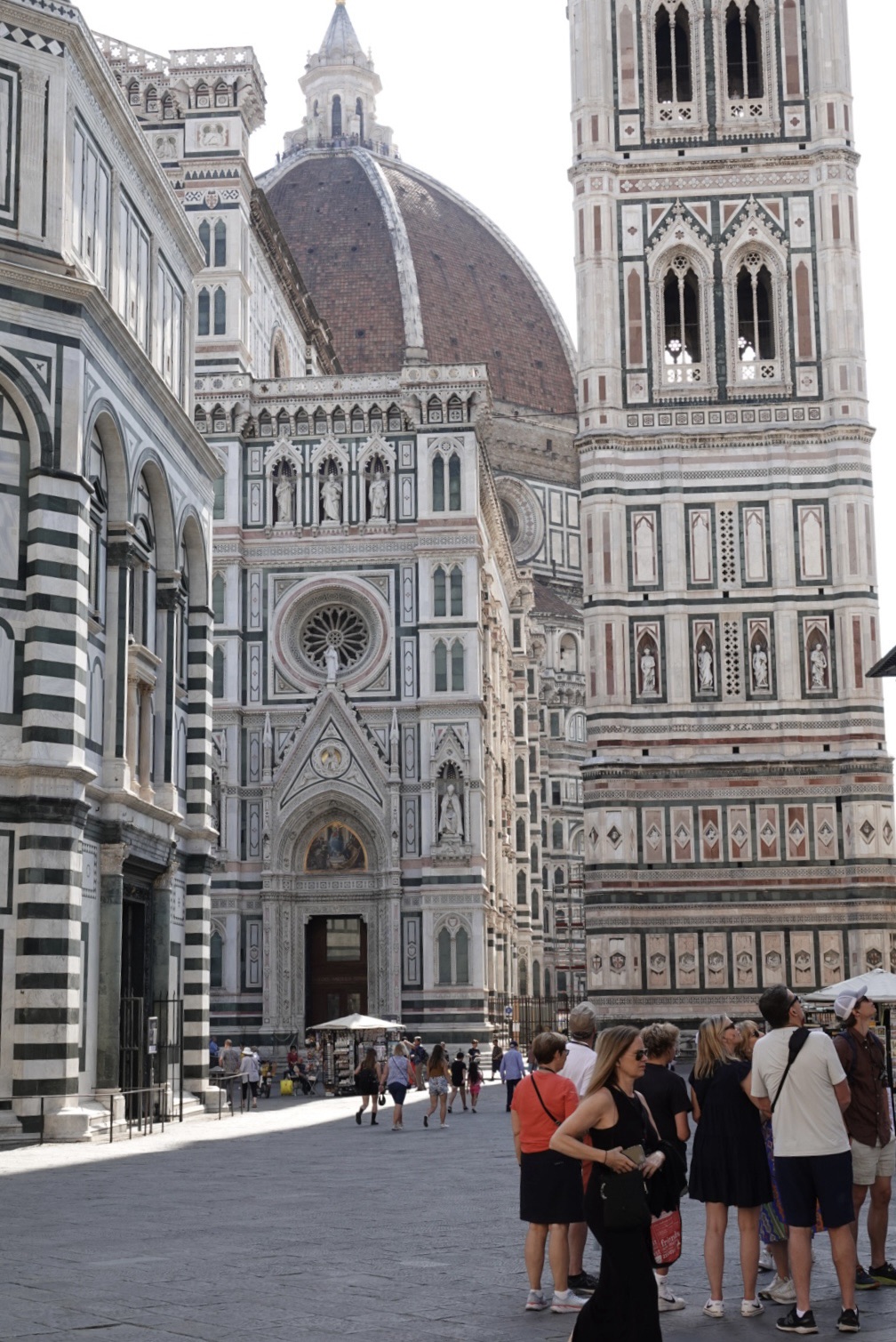
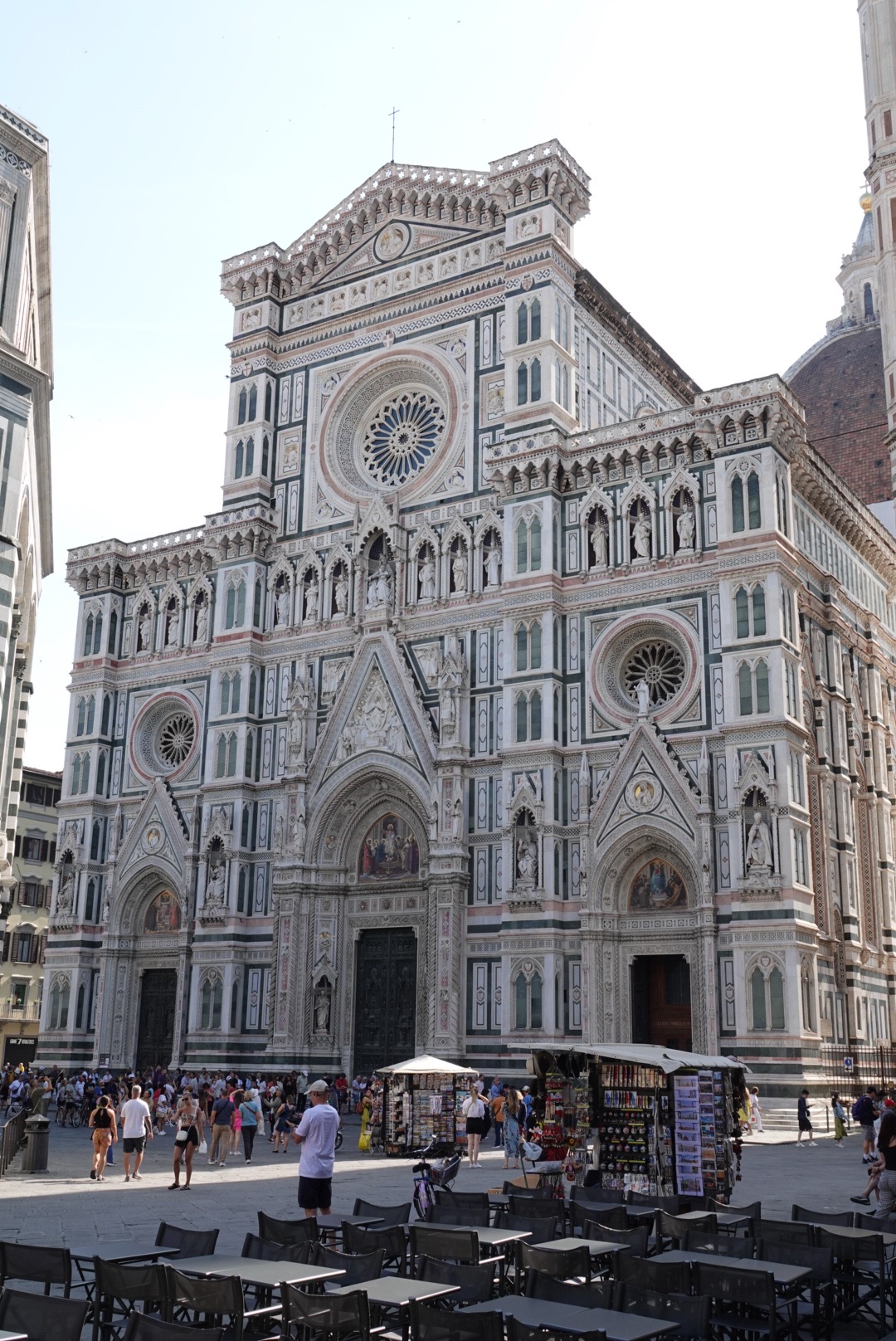



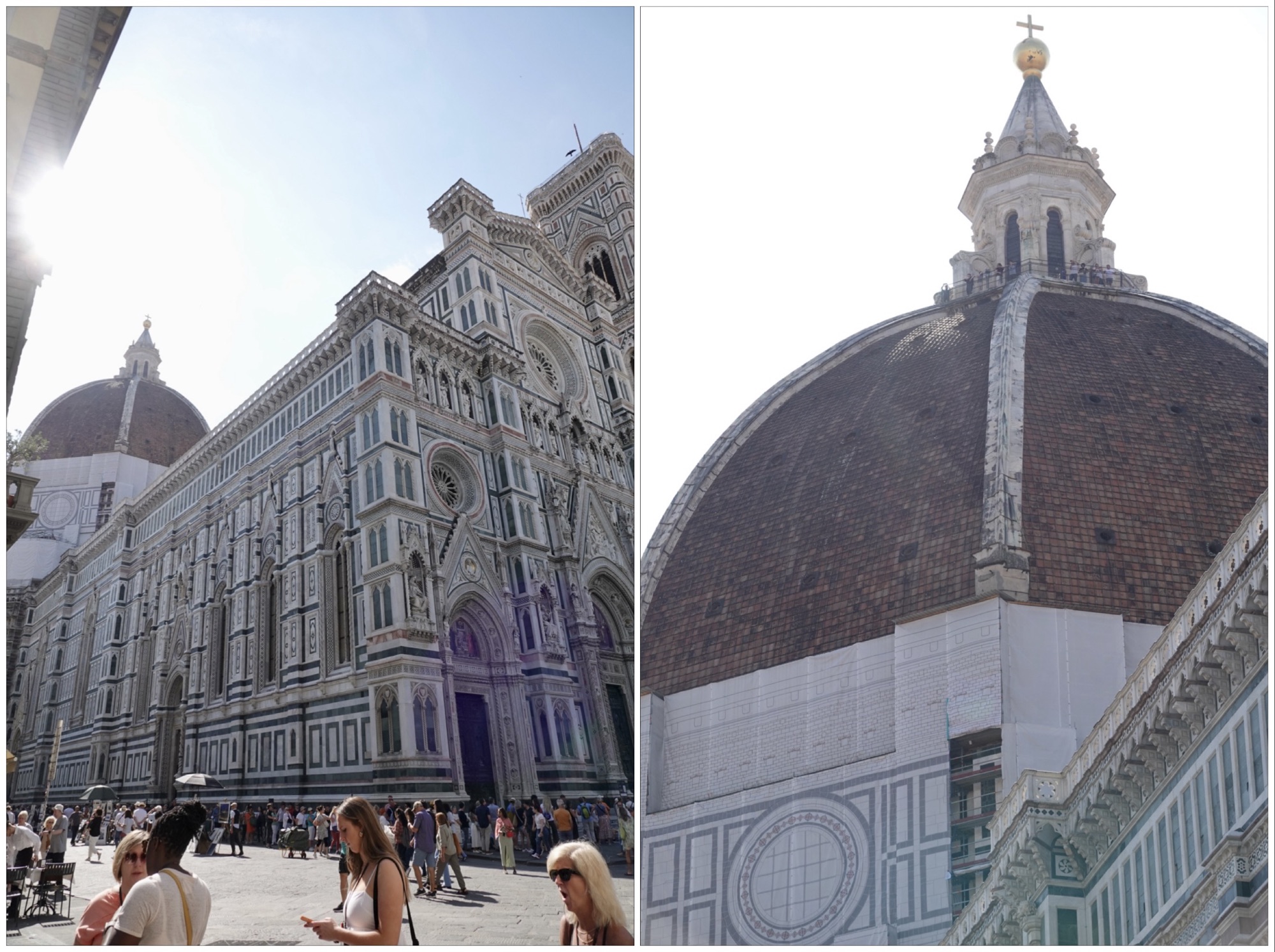
It was Michelangelo’s inspiration for the dome of St. Peter’s Basilica in Rome, which was completed almost 2 centuries later (1588 to 1590).

The Uffizi Gallery was originally built for the Medici family in 1581 to serve as administrative offices (“uffizi” in Italian) for Florence’s Tribunals , Guilds, Corporations and Courts. The Medici loved art so much – and had the vast amounts of money to indulge that love – that they filled their offices with it. By the early 1600s, the space was already so ornate that people began visiting by request. In 1765, the last Medici heiress, Anna Maria Luisa de’ Medici, signed over almost all Medici assets, including the Pitti Palace, Uffizi, and the Medicean Villas, to the Tuscan State, making it possible for over 4 million visitors to enjoy the masterpieces in the Uffizi each year. By 1865, 100 years after the original donation of the building to the state, the Uffizi Gallery was officially referred to as a museum.
Our guide to the Ufizzi was Vladimir, one of only two Cuban guides working in the city of Florence. The other gives exclusively Spanish language tours.
While the Medici collected all kinds of art, they were best known as patrons to sculptures and painters. Many of the statues outside in the Piazza, near the Ufizzi in front of the Medici municipal building, were commissioned by the Medici. In fact, in addition to the large bronze of Cosimo (Medici) the First, the statue of Neptune has Cosimo’s face. This was intended as a visible (in your face?) reminder that the Medici were responsible for funding the aqueduct that distributed so much of the water in the city.

Other sculptures were also commissioned specifically to highlight the power of the Medici family. The sculpture in the Piazza della Signoria that has Hercules defeating Cacus is meant to represent the Medici defeating Florence (they were exiled for a number of years and returned to become Dukes of Florence and the city’s ultimate power).
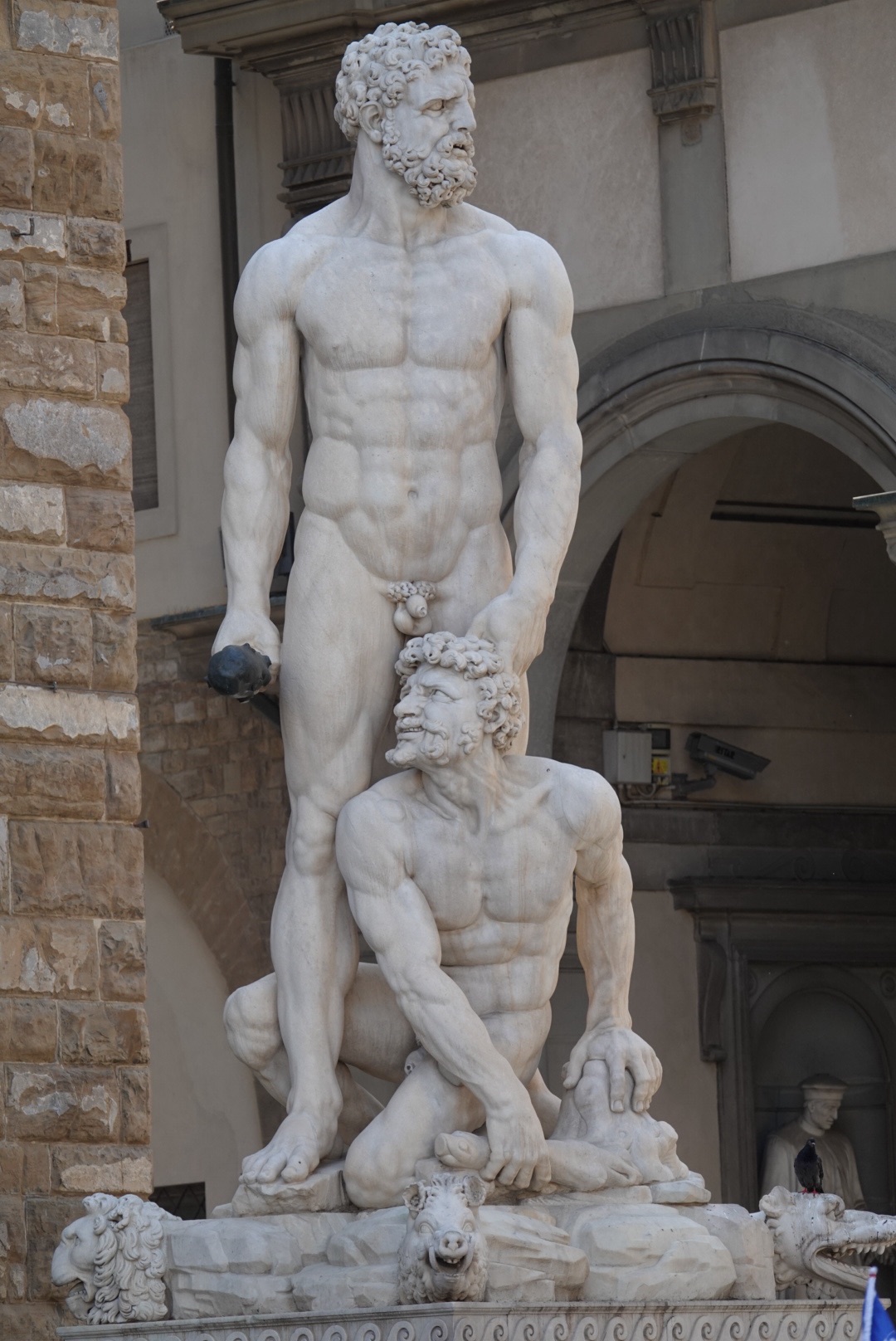
Once inside the Uffizi galleries, we focussed on paintings. While there are sculptures present, they are definitely in the minority. That could be because fewer people would ultimately admire them within the offices than if they were outside in one of the squares or on one of the buildings.
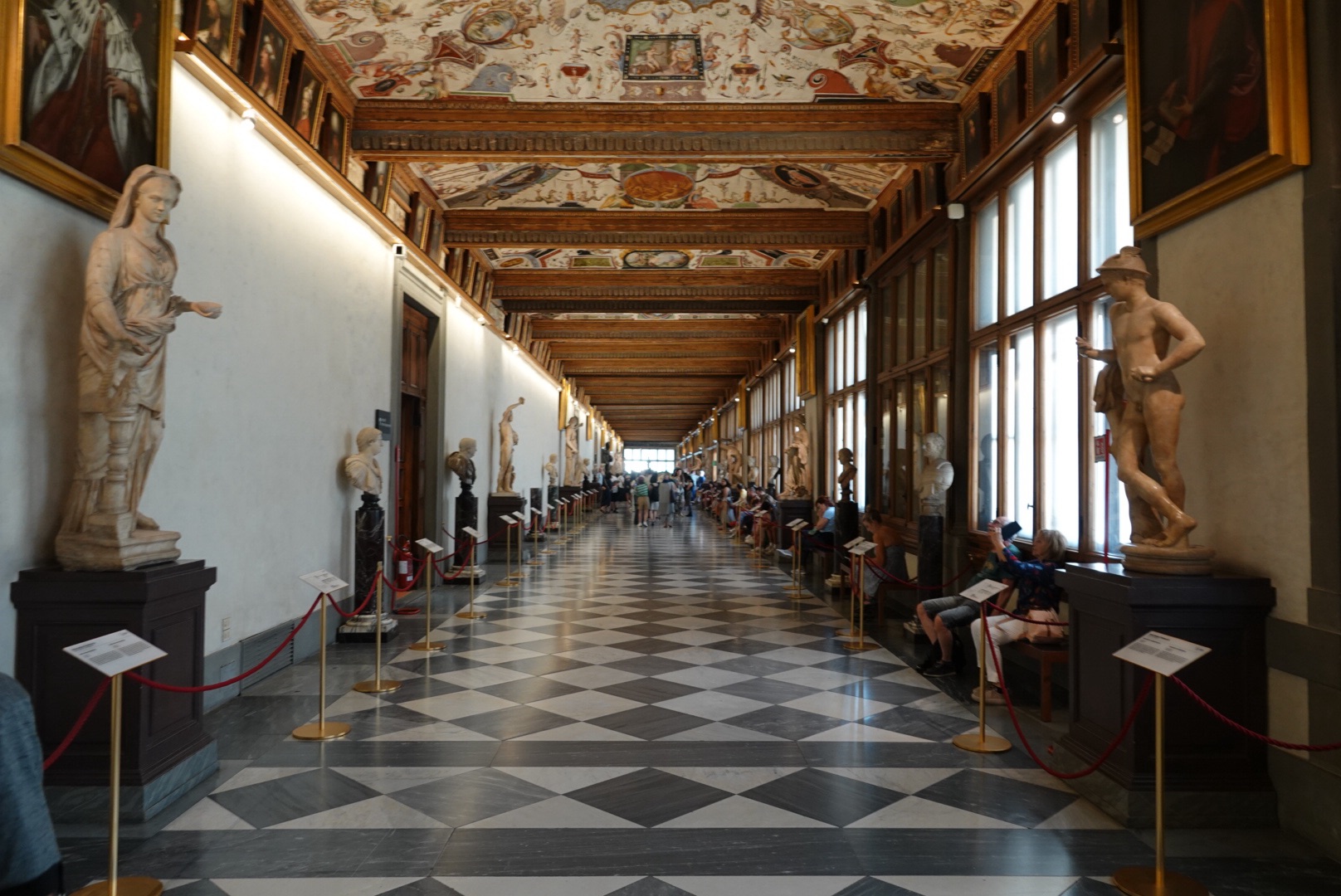



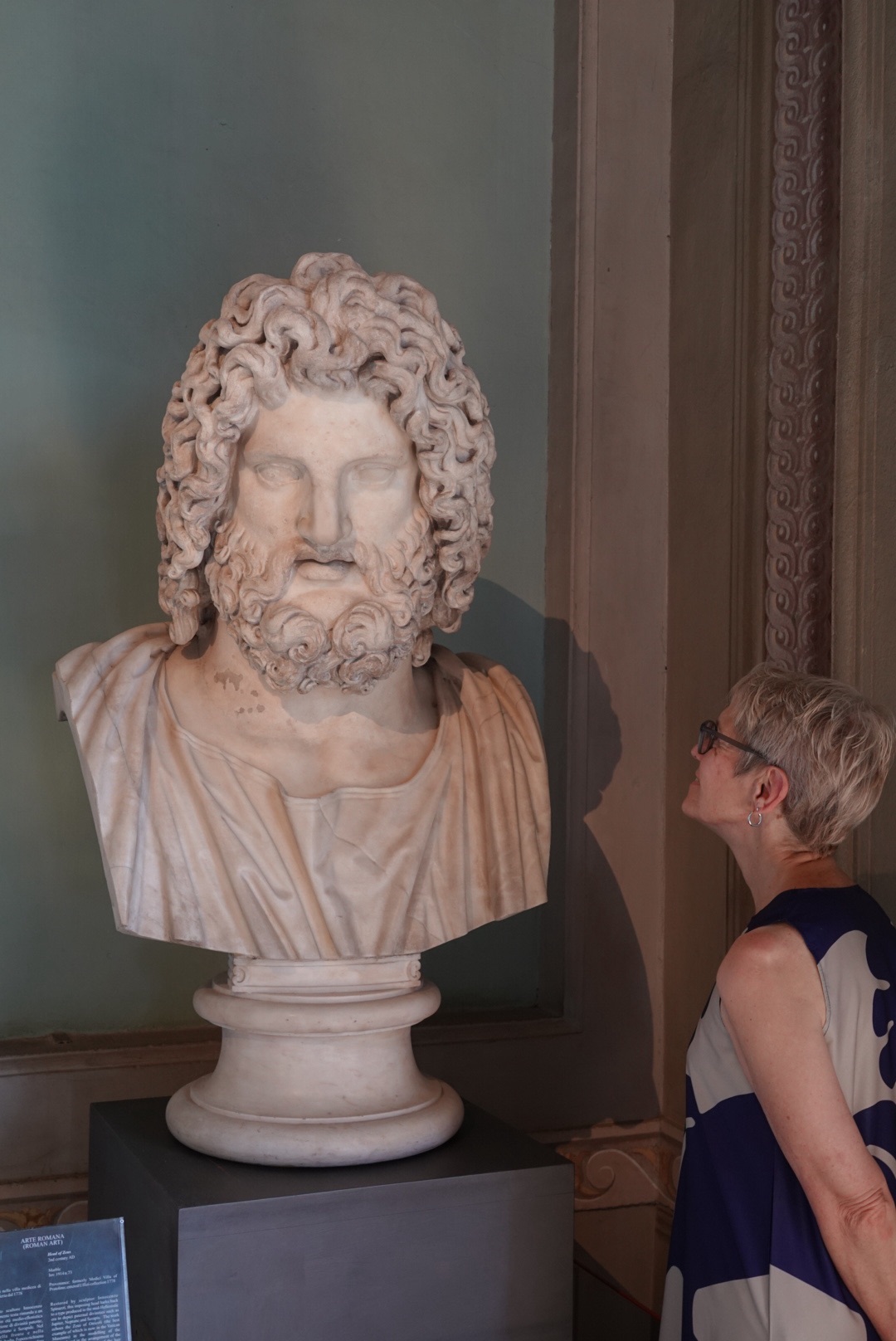

Vladimir took us into the art galleries and through the chronology of changes that brought painting from the medieval period through to the height of the Italian renaissance. In the first rooms of paintings we saw mostly religious figures, done in icon style, in pieces that were used in churches or at private alters. The figures in the paintings here had very flat, expressionless Byzantine faces. There was very little technique to create the feeling of three dimensions. Scale and perspective were also problematic. Figures at the top and bottom of paintings were the same size. Children were often portrayed, simply as miniaturized adult figures with adult faces. Angels were characterized by slightly rounder and paler faces, and the fact that they had wings. In one painting the angels flying higher, because there was no perspective used, are simply stacked on top of each other in the same 2 dimensional plane.

Duccio di Buoninsegna, Rucellai Madonna 1285, tempera on wood,
A second gallery featured paintings by Cimabue and his pupil Giotto, who began using mathematical perspective and a feature that rounded faces and bodies. Imagine thinking about a sphere behind fabric and depicting that in paint. Suddenly figures had shapes. Giotto was also an early pioneer of using depth perception in paintings.
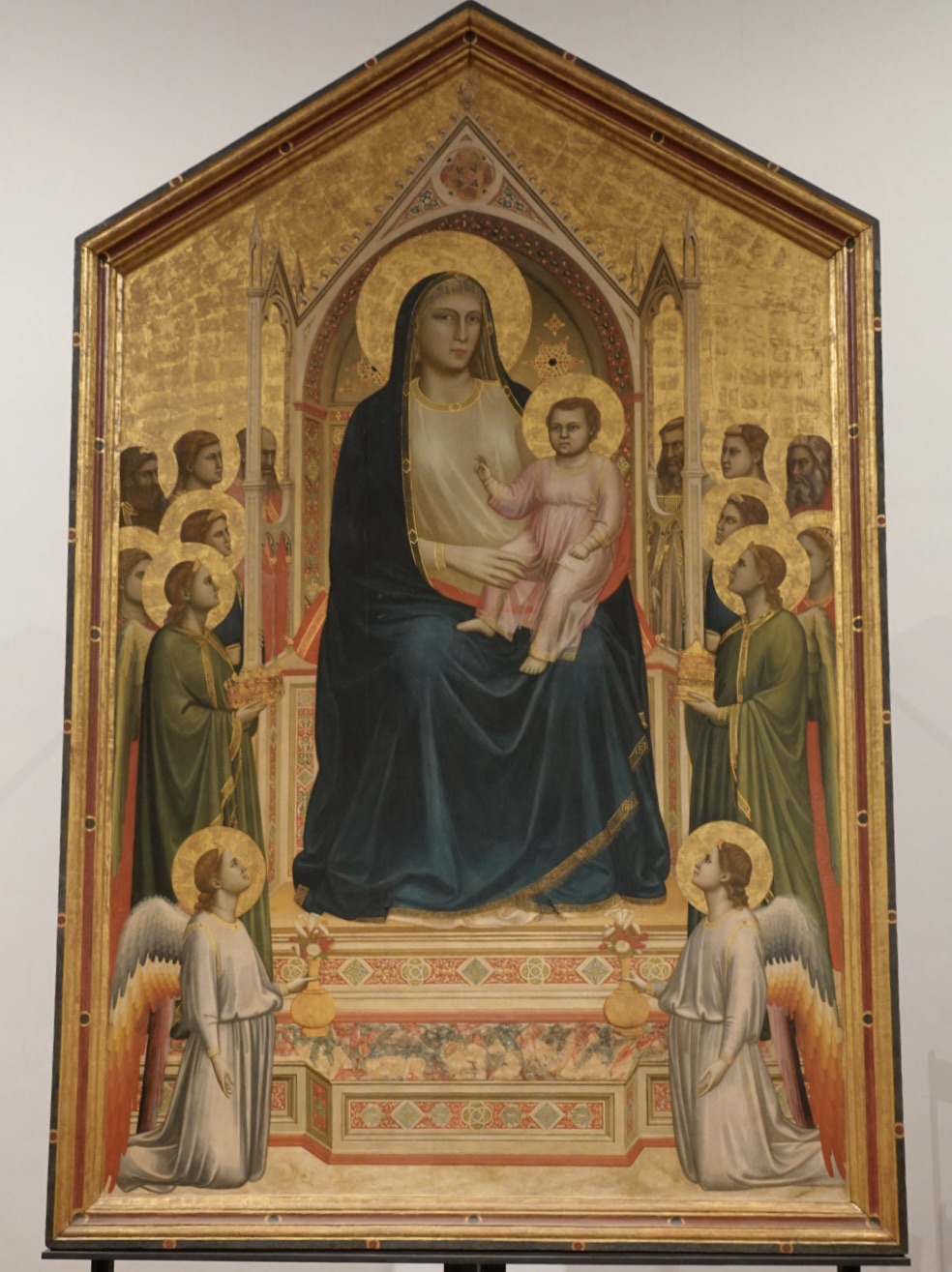
By the mid 1400s, paintings had progressed to things like this Madonna with Child and Angels done in tempera on panel by Filippo Lippi, a painting which became the point of reference for all subsequent Madonnas and Child, especially those by Sandro Botticelli.

We were wowed by paintings created by Raffaello (Raphael), Michelangelo, da Vinci, and Botticelli. As the Italian Renaissance progressed, there were huge changes in how people were represented, how backgrounds were used, how buildings became fully three-dimensional and how emotion began to be represented in paintings.


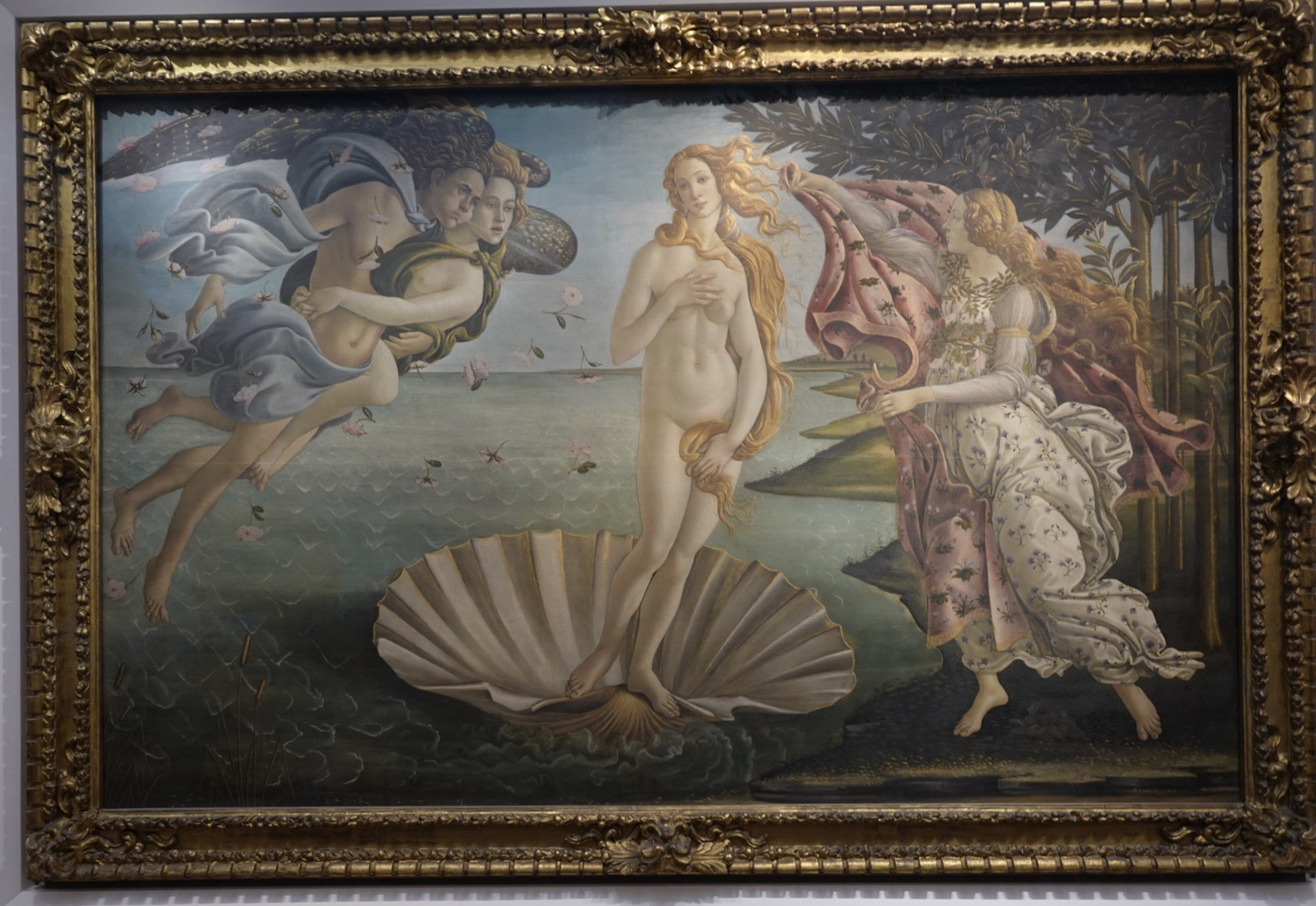
An interesting progression was demonstrated to us by comparing the face of Botticelli’s Venus with the face in one of da Vinci‘s paintings. In the tempera-painted Botticellis, looking up close, we could see an outline defining the edges of faces, almost like a thin pencil line. In the oil-painted da Vinci faces, the edges were using Leonardo‘s thumb, creating a more realistic look.
The painting below is The Annunciation, by Leonardo DaVinci. Looked at straight-on (top) the figure on the right is out of proportion. Her right arm, resting above the table, is longer than her left arm, and her body is squat. But when looked at from an angle (bottom), the proportions are perfect. DaVinci painted this to be viewed in a narrow space from an angle! Now THAT is genius!
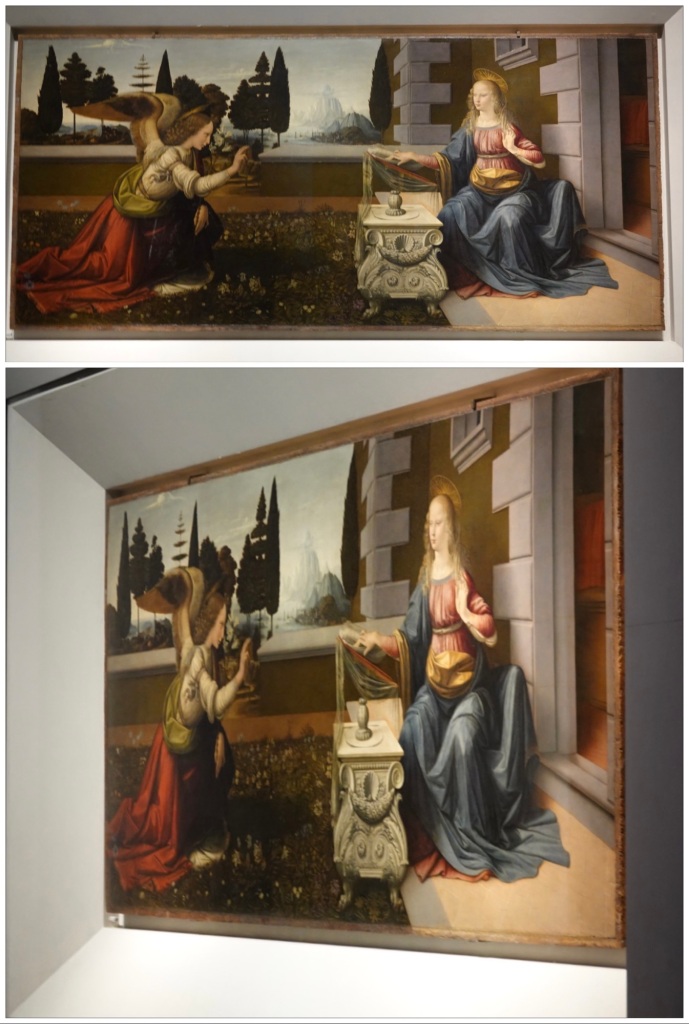
Sometimes paintings have amusing back stories. The painting below was the very first pictorial work by Michelangelo Buonarotti, an oil on panel done in 1506, commissioned by Agnolo Doni, a wealthy Florentine banker. Legend has it that Michelangelo really didn’t want to do it, being busy with sculpture work, but the merchant insisted. When it was completed, Michelangelo asked for a price which the banker refused to pay, so Michelangelo refused to sell. When the banker came back, having decided to accept the price after all , Michelangelo is said to have doubled his ask – and received it!
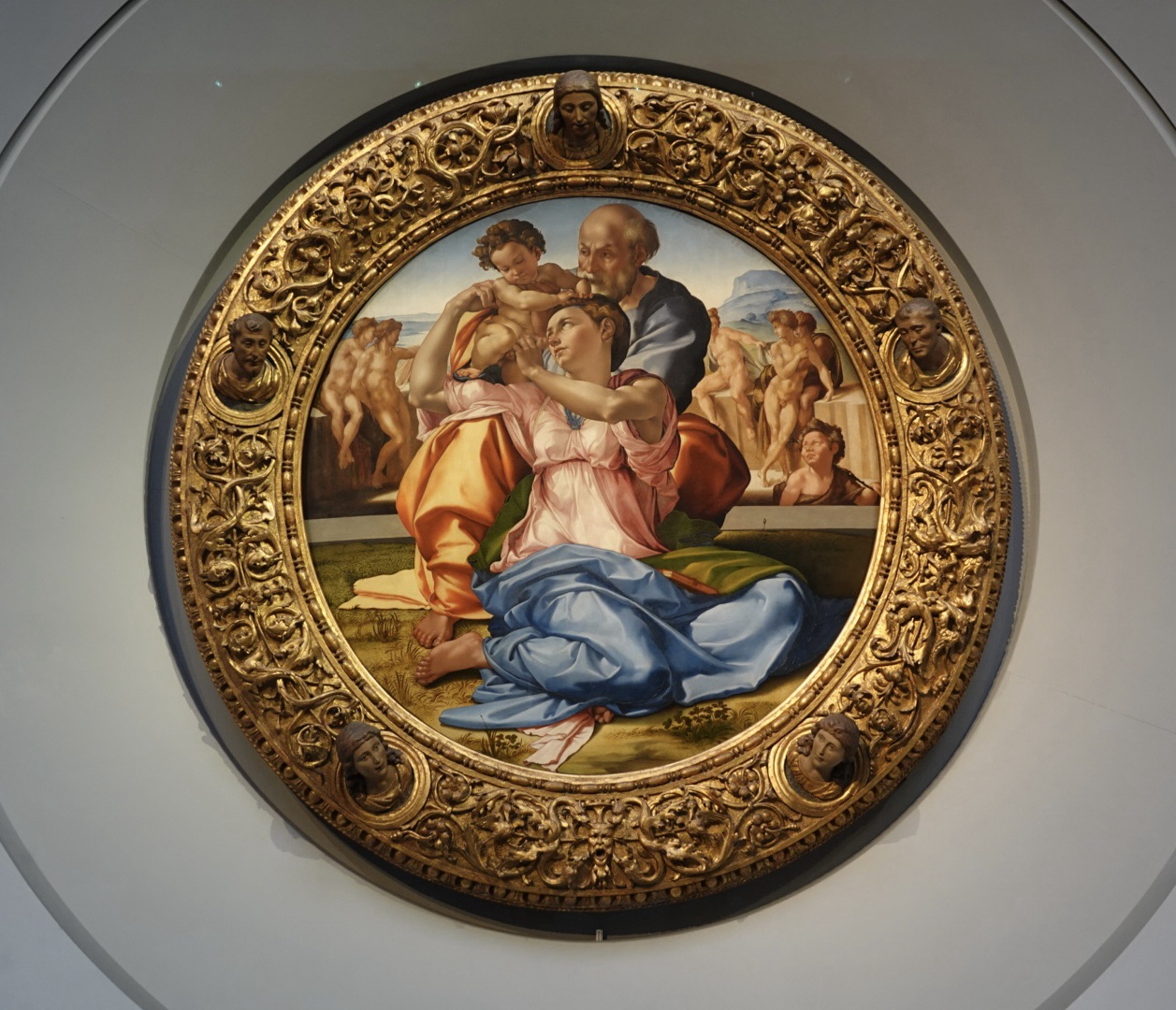
The influence of renaissance artists on each other is sometimes more obvious than others. Look at the portrait by Rafaelo (below). Vladimir pointed out that the pose is in every way identical to DaVinci’s Mona Lisa, painted the previous year.

After the two hour guided portion of our tour was over, we were able to remain in the Uffizi galleries as long as we wished. First, of course, we needed a brief respite, sitting down with water, cocktails, and a bit of something to eat. I was ready to put my feet up a bit on one of the concrete lamp stands. The heat in the city combined with standing and walking for hours every day, has caused my ankles to swell. That’s something that has never happened before, even when we walked in the desert in Egypt or Saudi Arabia.
When it was time to continue, we moved on into a large gallery that featured all self portraits.

I particularly liked the self portrait of Johannes Gumpp that showed the back of the artist, his reflection in a mirror, and the painting on which he was working – giving us three different perspectives.

Naturally, I wasn’t going to leave the Uffizi without finding the Caravaggios. While his biblical themes can be quote gruesome, his ability to make oil paint look like actual light is magical.

After our time in the museum, we were left to our own devices, but after almost 4 full hours in the Uffizi galleries, we were too tired to stand in an hour long line to get into the Florence Duomo, which is free admission – IF you wait in the line. At the ticket booth for skip-the-line tickets, there were no dome (i.e. entry to the dome portion of the Duomo) tickets left, and the general admission timed tickets were all combined with the Florence museum ticket. At €20 per person combined and how tired we were, I convinced Ted that we will simply have to return to Florence again in order to enter the famous Duomo.
Having decided against further touristy stuff, our free time turned into a “bonus”: a chance to reconnect with a friend made during our travels. I first met Pat in Mérida Mexico (Episode 392) through one of my Facebook travel groups, and we’ve stayed in touch ever since.

Pat took us across the Ponte Vecchio, to her favourite wine bar opposite the Pitti Palace.
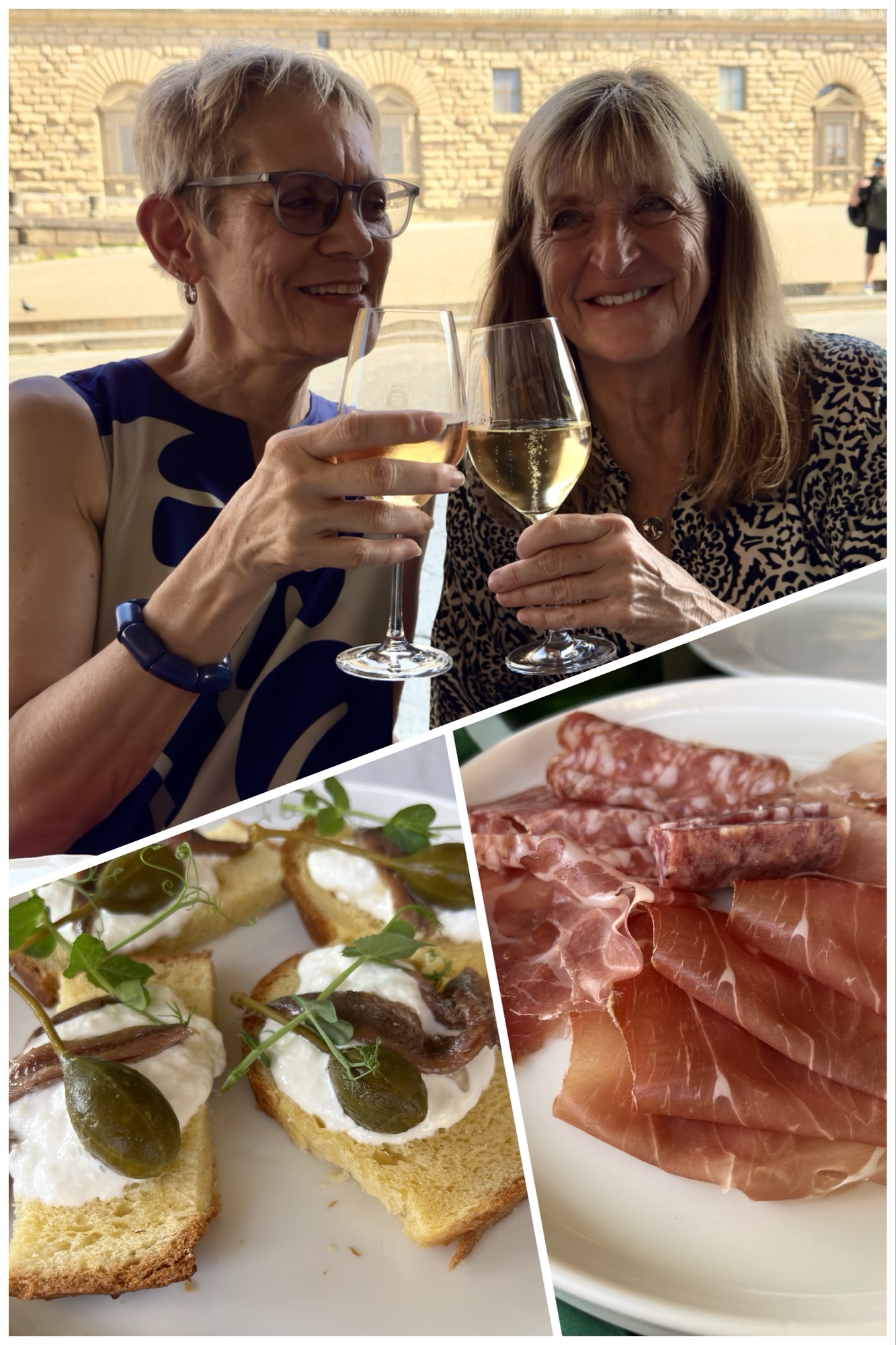
After a really lovely couple of hours reconnecting, Pat headed off to her Florence Apartment, and we got on the Number C3 bus (connecting to the no. 14) to take us to within 1 block of our hotel. We’d noshed our way through the day, so didn’t need dinner. Instead, we put our feet up, got caught up on emails, almost caught up on blog, writing, and called it a relatively early night.
Tomorrow we leave Florence at 7:30 AM headed for Venice, the last of the “eternal cities” highlighted on this tour.
<
div dir=”ltr”>
<
div dir=”ltr”>Was surprised to see the studs for marble. We just don’t know what’s involved
LikeLike
We were blown away by the Scrovegni Chapel in Padua — entirely painted by Giotto. If you have’t gotten there, be sure to include it the next time you are near Venice, just a half hour or so by train away. It’s essential to get timed tickets in advance — and not get lost and be late as we almost were just trying to find the entrance. You only get 15 minutes in the actual chapel. After each group they evacuate the air to reduce damage to the work. The leap these artists made — Giotto first, I think, to perspective and fully dimensional and expressive humans was really extraordinary. Seeing a great deal of Greek and Roman art AND Renaissance art on the same three week trip really brought home why the period between was called “The Dark Ages.” So much was lost and finally found again. Of course the people living through those years had no idea they were missing anything! Thanks for the Uffizi pictures especially — it looks so clean and light compared to 1985!
LikeLike
Hi Rose, I always learn interesting facts from reading your blog! I’m so glad we had a chance to catch up over a very leisurely aperitivo! It was great to see you and Ted. Looking forward to seeing you again “somewhere in the world”. Pat xx
LikeLike
Rose,
I have been following your and Ted’s adventures for quite some time and never comment. I just want to thank you for taking me along on your adventures! I was in Florence last year on a tour but did not gather 1/8th of the information you provided in this post! You have a way of making me feel like I was there again. The painting descriptions are amazing and informative. Also, love your dress :)!! Thanks for sharing your trip with us!!
Carol
LikeLiked by 1 person
So very happy to have you along on our adventures!
LikeLike
Just a few comments from my time studying Renaissance Art in Florence ten years ago: Sculptures are housed in the Bargello Museum; ten years ago, there was only one painting by a woman in the entire Uffizi Galleries; Michelangelo was gay so it’s not wonder he was acutely aware of the male form.
LikeLiked by 1 person
Thanks for the extra insight!
LikeLike